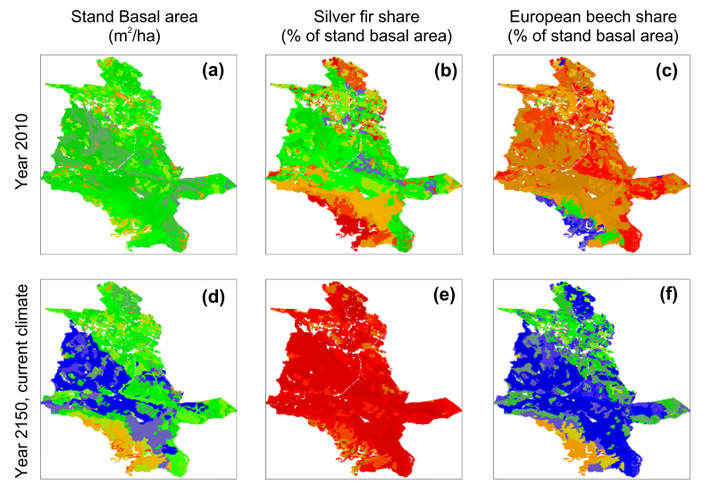Accurate modeling of harvesting is key for projecting future forest dynamics: a case study in the Slovenian mountains

Abstract
Maintaining the provision of multiple forest ecosystem services requires to take into consideration forest sensitivity and adaptability to a changing environ-ment. In this context, dynamic models are indispensable to assess the combined effects of management and climate change on forest dynamics. We evaluated the importance of implementing different approaches for simulating forest management in the climate-sensitive gap model ForClim and compared its outputs with forest inventory data at multiple sites across the European Alps. The model was then used to study forest dynamics in representative silver fir–European beech stands in the Dinaric Mountains (Slovenia) under current management and different climate scenarios. On average, ForClim accurately predicted the development of basal area and stem numbers, but the type of harvesting algorithm used and the information for stand initialization are key elements that must be defined care-fully. Empirical harvesting functions that rigorously impose the number and size of stems to remove fail to reproduce stand dynamics when growth is just slightly under-or overestimated, and thus should be substituted by analytical thinning algorithms that are based on stochastic distribution functions. Long-term simulations revealed that both management and climate change negatively impact conifer growth and regeneration. Under current climate, most of the simulated stands were dominated by European beech at the end of the simulation (i.e., 2150 AD), due to the decline of silver fir and Norway spruce caused mainly by harvesting. This trend was amplified under climate change as growth of European beech was favored by higher temperatures, in contrast to drought-induced growth reductions in both conifers. This forest development sce-nario is highly undesired by local managers who aim at preserving conifers with high economic value. Overall, our results suggest that maintaining a considerable share of conifers in these forests may not be feasible under climate change, especially at lower elevations where foresters should consider alternative management strategies